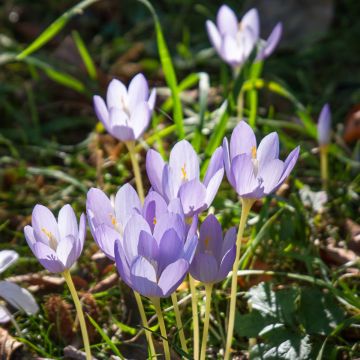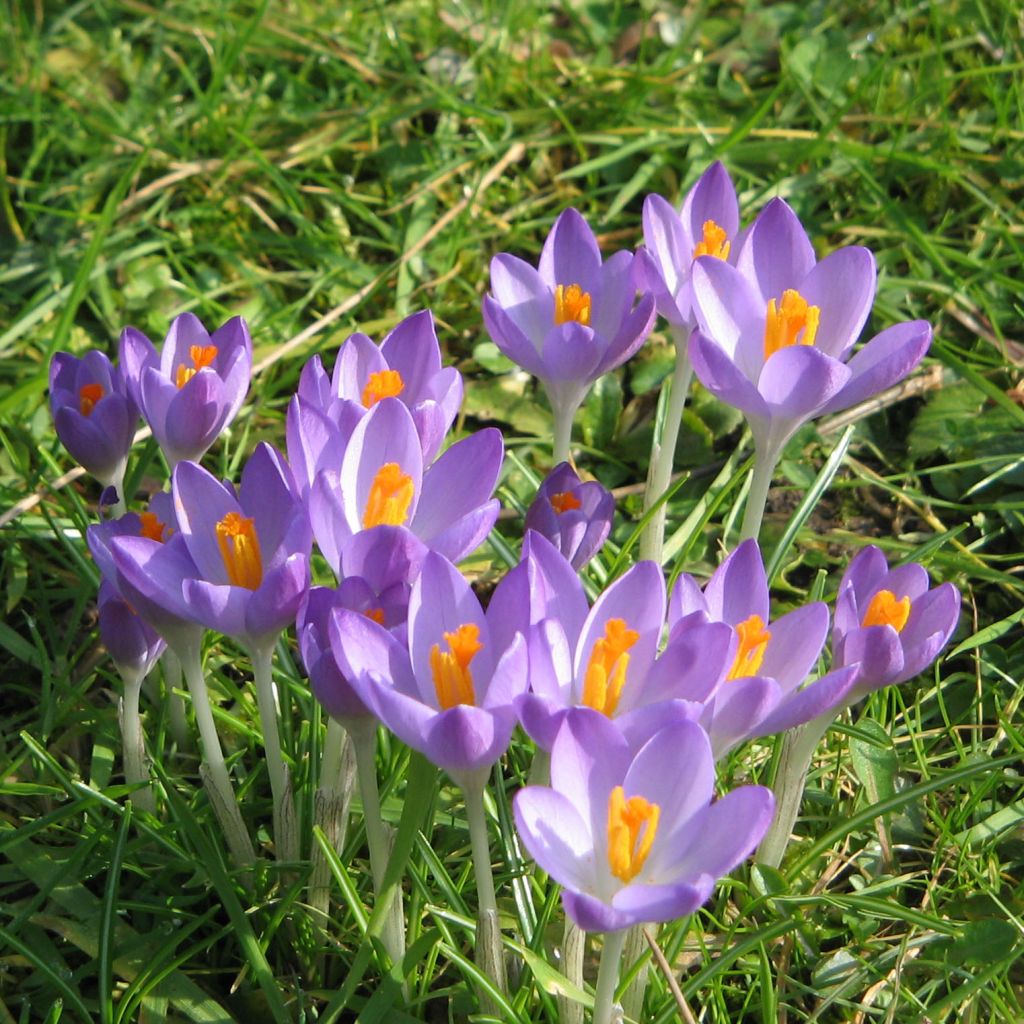

Crocus tommasinianus Barr's Purple - Crocus de Thomas


Crocus tommasinianus Barr's Purple
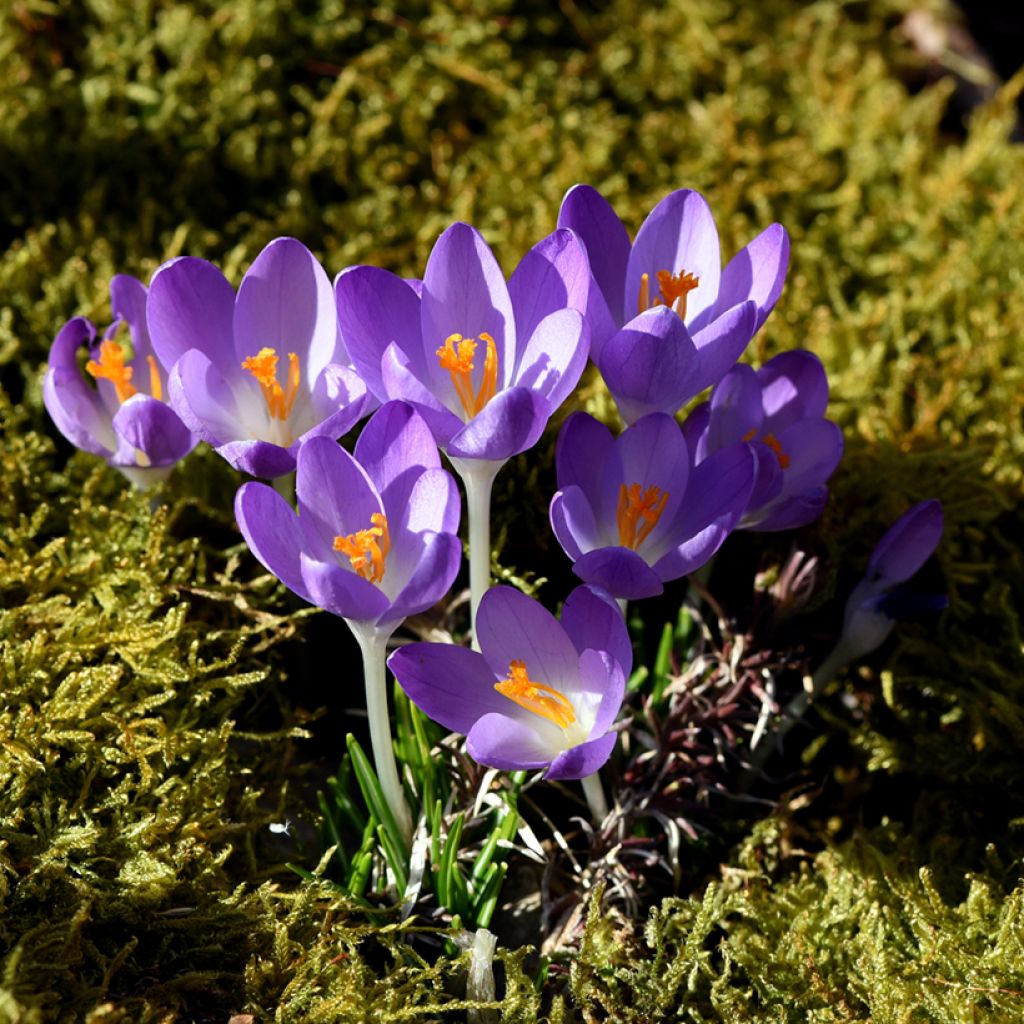

Crocus tommasinianus Barr's Purple
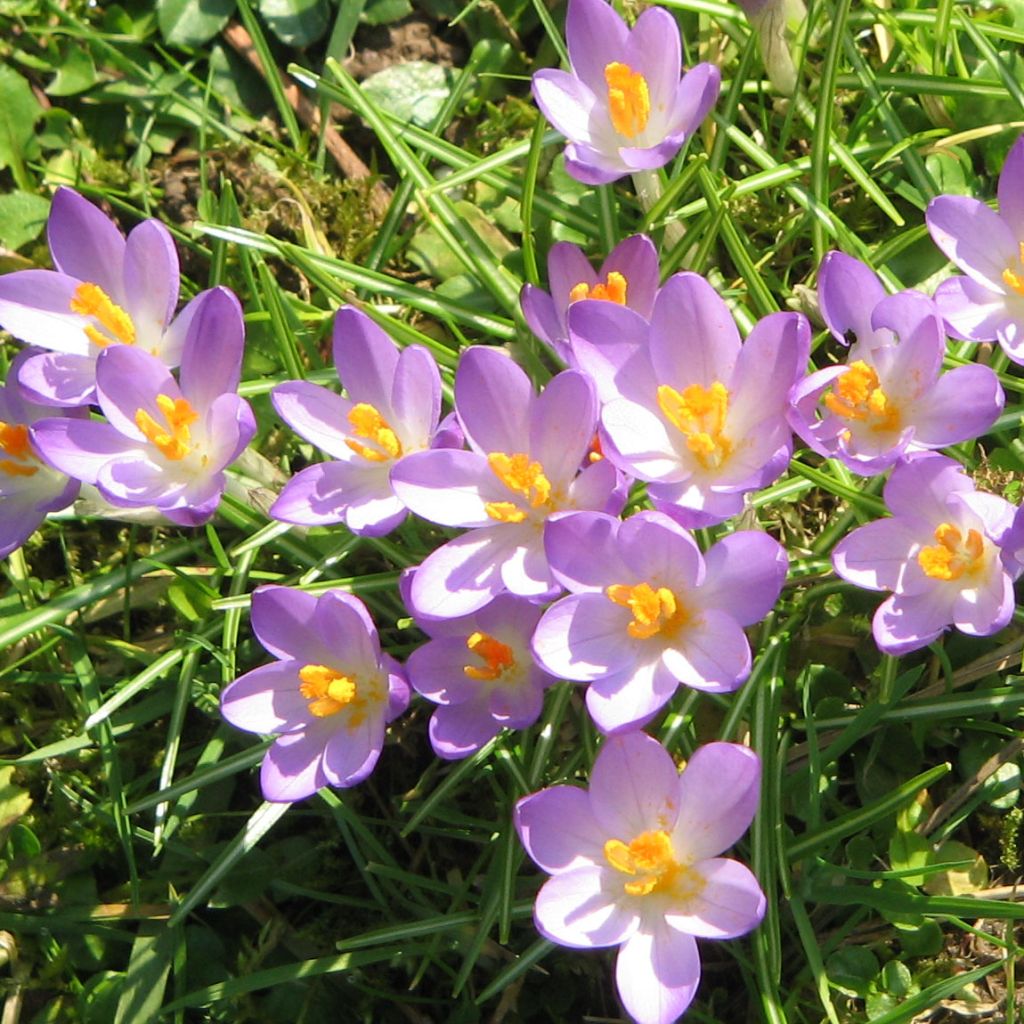

Crocus tommasinianus Barr's Purple - Crocus de Thomas
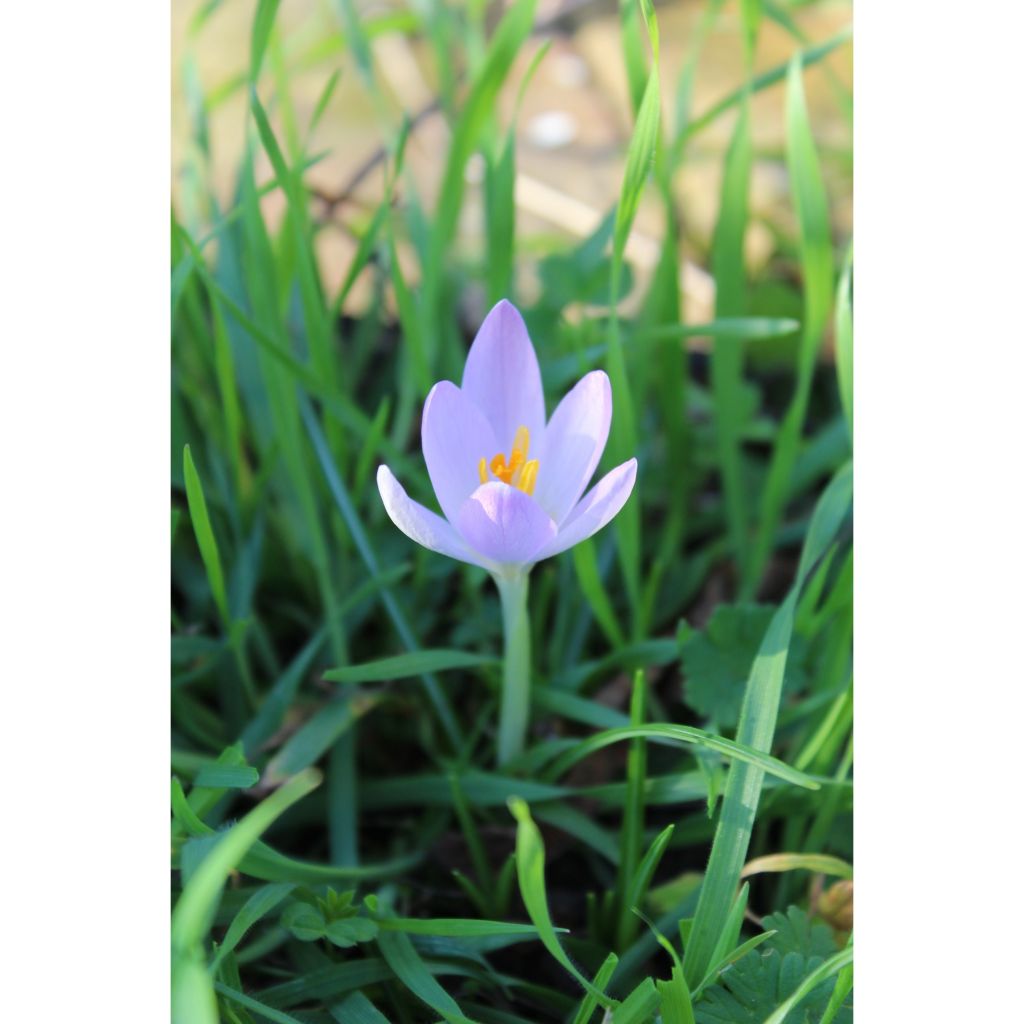

Crocus tommasinianus Barrs Purple - Early Crocus
View more pictures
Hide images

Guillaume A.

Tommies Crocus piercing the snow in Val Thorens
Guillaume A. • 74 FR

Daravane K.

Solitary crocus in early February
Daravane K. • 35 FR
Crocus tommasinianus Barrs Purple - Early Crocus
Crocus tommasinianus Barr's Purple
Early Crocus, Woodland Crocus, Tommasini's Crocus
They are all blooming right now, just a little later than the 'Snow bunting' and yellow crocuses, cyclamens, snowdrops, and the first ipheions: like an early spring!
Mi , 05/02/2025
Special offer!
Receive a €20 voucher for any order over €90 (excluding delivery costs, credit notes, and plastic-free options)!
1- Add your favorite plants to your cart.
2- Once you have reached €90, confirm your order (you can even choose the delivery date!).
3- As soon as your order is shipped, you will receive an email containing your voucher code, valid for 3 months (90 days).
Your voucher is unique and can only be used once, for any order with a minimum value of €20, excluding delivery costs.
Can be combined with other current offers, non-divisible and non-refundable.
This plant carries a 6 months recovery warranty
More information
We guarantee the quality of our plants for a full growing cycle, and will replace at our expense any plant that fails to recover under normal climatic and planting conditions.

Would this plant suit my garden?
Set up your Plantfit profile →
Description
Crocus tommasinianus 'Barr's Purple' is a variety of botanical crocus bearing mauve-violet flowers with a silvery underside. Its star-shaped flowers reveal a golden yellow stamen heart, with a very thin white tube at the base. They bloom from late winter, before the Dutch hybrid crocuses, announcing the return of spring. It is one of the easiest species to cultivate and naturalise in the garden, in lawns, meadows, beds and rockeries, even in dry and poor soil.
Crocus tommasinianus, also known as Thomas's Crocus, belongs to the Iridaceae family. It originates from Hungary, Croatia, former Yugoslavia (Serbia, Montenegro), and Bulgaria. This prolific plant forms significant colonies in upright tufts measuring 10 to 15cm (4 to 6in) in height. It has a rapid growth rate. The flowering takes place from February to March.
'Barr's Purple' bears delicate flowers, measuring 2 to 3.5cm (1in) in length. They are cup-shaped and open in a star pattern. They are mauve with a silver sheen on their undersides, with whiter areas inside the petals, down to the throat. The flower's heart is filled with yellow stamens grouped in a 'tube', with a white base. The flowers close at night and in bad weather, opening widely in the sun and even in partial shade. The foliage is deciduous, composed of fine, thick, linear leaves, which are single and alternate. They are a shiny medium green with a white-silver central band. The 'bulbs' here are corms. A corm is, in plant morphology, an underground reserve organ that looks like a bulb but is formed by a swollen stem surrounded by scales.
Crocus tommasinianus 'Barr's Purple' works wonders in a rockery, emerging from stones bleached by the sun, or adorning the edge of a winding path. It will also thrive on the edge of light undergrowth, along a hedge, planted en masse at the base of deciduous trees (lilac, mock orange, viburnums) with Anemone blanda and Cyclamen coum, or even in the middle of a lawn with winter aconites, snowdrops, or a carpet of violets, and of course, with other early-flowering crocuses. This crocus is suitable for planting in outdoor pots and can be used in green roofs.
Crocus roots can contract like a spring, allowing the plant to settle at its ideal depth.
Report an error about the product description
Crocus tommasinianus Barrs Purple - Early Crocus in pictures
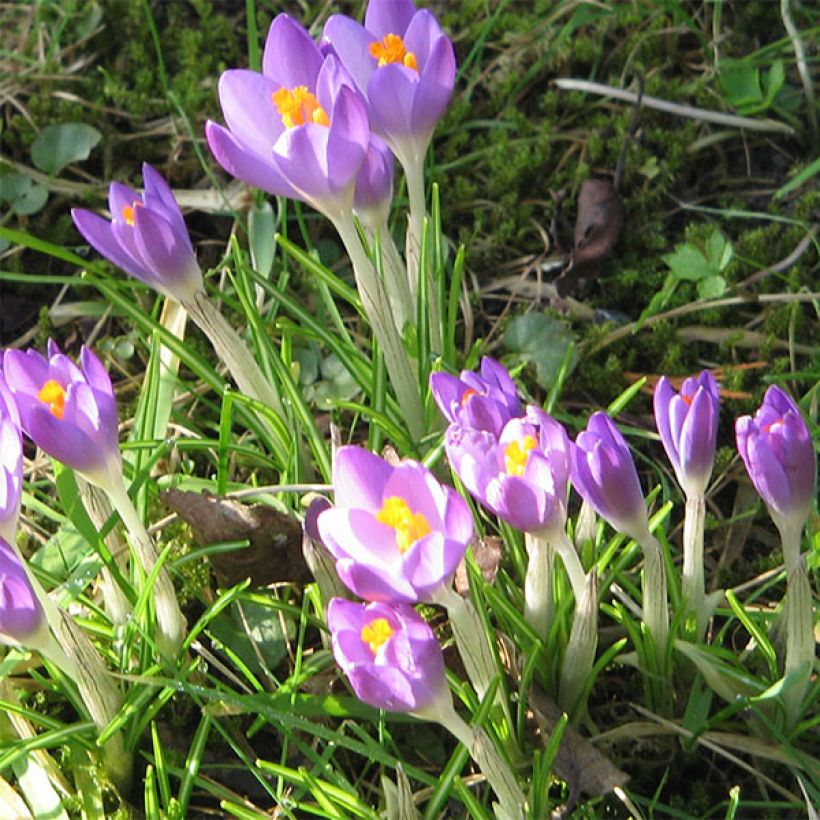

Plant habit
Flowering
Foliage
Botanical data
Crocus
tommasinianus
Barr's Purple
Iridaceae
Early Crocus, Woodland Crocus, Tommasini's Crocus
Central Europe
Other Spring Crocus
View all →Planting and care
Plant the bulbs from September to December, in light soil, at a depth of 8cm (3in) and with a spacing of 5cm (2in), or in groups of three every 15 to 20cm (6 to 8in). It is best to leave the bulbs in place, where they will form increasingly floriferous clumps. They also work well in pots on a patio. They grow in light, humus-bearing and well-drained, neutral to alkaline soils, and prefer a sunny exposure where the corollas will fully open. It is also important to protect them from cold winds. The ideal substrate should be sandy-gravelly with a pH between 8 and 10. It can tolerate temperatures as low as -29°C (-20.2°F). It withstands summer drought. The plants have the best effect when planted in groups of 5 to 10 specimens. Once acclimatised and established, they multiply rapidly. Care should be taken not to cut the foliage before it turns yellow. Corms are susceptible to excess moisture, which can cause them to rot during their resting period. Rodents are fond of these corms, and snails and slugs feed on all aerial parts of the plant
Planting period
Intended location
Care
-
, onOrder confirmed
Reply from on Promesse de fleurs
Haven't found what you were looking for?
Hardiness is the lowest winter temperature a plant can endure without suffering serious damage or even dying. However, hardiness is affected by location (a sheltered area, such as a patio), protection (winter cover) and soil type (hardiness is improved by well-drained soil).

Photo Sharing Terms & Conditions
In order to encourage gardeners to interact and share their experiences, Promesse de fleurs offers various media enabling content to be uploaded onto its Site - in particular via the ‘Photo sharing’ module.
The User agrees to refrain from:
- Posting any content that is illegal, prejudicial, insulting, racist, inciteful to hatred, revisionist, contrary to public decency, that infringes on privacy or on the privacy rights of third parties, in particular the publicity rights of persons and goods, intellectual property rights, or the right to privacy.
- Submitting content on behalf of a third party;
- Impersonate the identity of a third party and/or publish any personal information about a third party;
In general, the User undertakes to refrain from any unethical behaviour.
All Content (in particular text, comments, files, images, photos, videos, creative works, etc.), which may be subject to property or intellectual property rights, image or other private rights, shall remain the property of the User, subject to the limited rights granted by the terms of the licence granted by Promesse de fleurs as stated below. Users are at liberty to publish or not to publish such Content on the Site, notably via the ‘Photo Sharing’ facility, and accept that this Content shall be made public and freely accessible, notably on the Internet.
Users further acknowledge, undertake to have ,and guarantee that they hold all necessary rights and permissions to publish such material on the Site, in particular with regard to the legislation in force pertaining to any privacy, property, intellectual property, image, or contractual rights, or rights of any other nature. By publishing such Content on the Site, Users acknowledge accepting full liability as publishers of the Content within the meaning of the law, and grant Promesse de fleurs, free of charge, an inclusive, worldwide licence for the said Content for the entire duration of its publication, including all reproduction, representation, up/downloading, displaying, performing, transmission, and storage rights.
Users also grant permission for their name to be linked to the Content and accept that this link may not always be made available.
By engaging in posting material, Users consent to their Content becoming automatically accessible on the Internet, in particular on other sites and/or blogs and/or web pages of the Promesse de fleurs site, including in particular social pages and the Promesse de fleurs catalogue.
Users may secure the removal of entrusted content free of charge by issuing a simple request via our contact form.
The flowering period indicated on our website applies to countries and regions located in USDA zone 8 (France, the United Kingdom, Ireland, the Netherlands, etc.)
It will vary according to where you live:
- In zones 9 to 10 (Italy, Spain, Greece, etc.), flowering will occur about 2 to 4 weeks earlier.
- In zones 6 to 7 (Germany, Poland, Slovenia, and lower mountainous regions), flowering will be delayed by 2 to 3 weeks.
- In zone 5 (Central Europe, Scandinavia), blooming will be delayed by 3 to 5 weeks.
In temperate climates, pruning of spring-flowering shrubs (forsythia, spireas, etc.) should be done just after flowering.
Pruning of summer-flowering shrubs (Indian Lilac, Perovskia, etc.) can be done in winter or spring.
In cold regions as well as with frost-sensitive plants, avoid pruning too early when severe frosts may still occur.
The planting period indicated on our website applies to countries and regions located in USDA zone 8 (France, United Kingdom, Ireland, Netherlands).
It will vary according to where you live:
- In Mediterranean zones (Marseille, Madrid, Milan, etc.), autumn and winter are the best planting periods.
- In continental zones (Strasbourg, Munich, Vienna, etc.), delay planting by 2 to 3 weeks in spring and bring it forward by 2 to 4 weeks in autumn.
- In mountainous regions (the Alps, Pyrenees, Carpathians, etc.), it is best to plant in late spring (May-June) or late summer (August-September).
The harvesting period indicated on our website applies to countries and regions in USDA zone 8 (France, England, Ireland, the Netherlands).
In colder areas (Scandinavia, Poland, Austria...) fruit and vegetable harvests are likely to be delayed by 3-4 weeks.
In warmer areas (Italy, Spain, Greece, etc.), harvesting will probably take place earlier, depending on weather conditions.
The sowing periods indicated on our website apply to countries and regions within USDA Zone 8 (France, UK, Ireland, Netherlands).
In colder areas (Scandinavia, Poland, Austria...), delay any outdoor sowing by 3-4 weeks, or sow under glass.
In warmer climes (Italy, Spain, Greece, etc.), bring outdoor sowing forward by a few weeks.






























